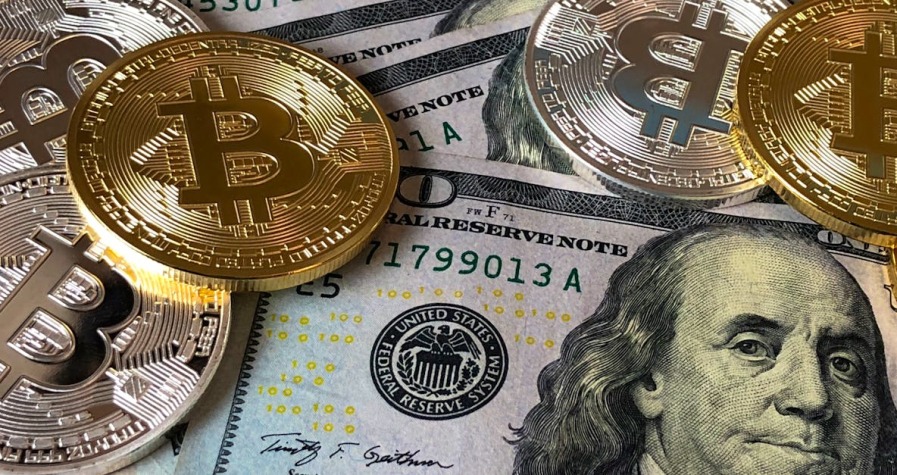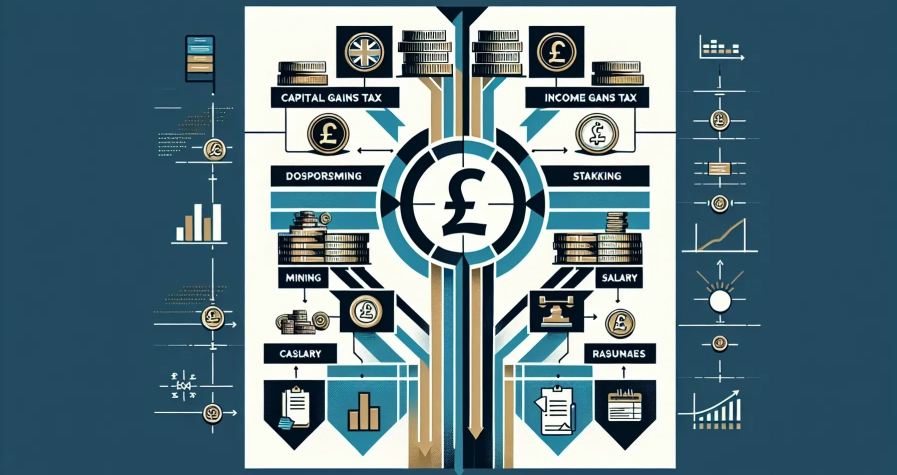Key Takeaways
- Maker fees are lower than taker fees because makers add liquidity to the order book with limit orders that wait for execution, whilst takers remove liquidity through immediate market orders or matching limit orders
- Trading volume directly impacts your fees with most exchanges offering tiered discounts that can reduce maker fees to 0% and taker fees significantly for high-volume traders exceeding millions in monthly volume
- Strategic use of limit orders can reduce trading costs by 40-60% compared to market orders, as they qualify for cheaper maker fees when positioned just inside the bid-ask spread
- Exchange-specific benefits like using native tokens (BNB on Binance offers 25% discounts) or achieving VIP status can provide substantial additional fee reductions beyond standard volume tiers
- Fee structures vary significantly across platforms with Binance starting at 0.1% for both fees, Coinbase Pro at 0.5%, and Kraken at 0.16% makers/0.26% takers, making exchange selection crucial for cost optimisation
When you’re trading cryptocurrency you’ll quickly encounter two terms that directly impact your profits: maker fees and taker fees. These trading costs can significantly affect your overall returns especially if you’re an active trader making frequent transactions.
Understanding the difference between these fee structures is crucial for choosing the right exchange and optimising your trading strategy. Maker fees apply when you add liquidity to the order book by placing limit orders that don’t execute immediately. Taker fees on the other hand are charged when you remove liquidity by accepting existing orders in the market.
Most crypto exchanges use this maker-taker model to incentivise market liquidity and maintain orderly trading. By learning how these fees work you can make more informed decisions about when and how to execute your trades ultimately keeping more money in your pocket.
What Are Maker and Taker Fees?
Maker and taker fees represent the two fundamental pricing structures that crypto exchanges use to charge trading costs based on how your orders interact with the market. These fee categories directly correspond to whether your trading activity adds or removes liquidity from the exchange’s order book.
Understanding Market Makers
Market makers are traders who provide liquidity to exchanges by placing limit orders that don’t execute immediately against existing orders. When you place a limit order below the current market price for buying or above the current market price for selling, you become a market maker. Your order sits in the order book and waits for another trader to match with it.
Exchanges typically charge lower fees to market makers because these traders enhance market depth and stability. Maker fees generally range from 0% to 0.25% across major crypto exchanges like Binance, Coinbase Pro, and Kraken. Some exchanges even offer negative maker fees, meaning they pay you a rebate for providing liquidity.
Your maker orders help create a more robust trading environment by narrowing bid-ask spreads and providing price discovery. Professional traders and institutional investors often employ market-making strategies to capture these fee advantages whilst contributing to overall market efficiency.
Understanding Market Takers
Market takers are traders who remove liquidity from exchanges by executing market orders or limit orders that immediately match against existing orders in the order book. When you place a market buy order or a limit sell order at or below the current best bid price, you take liquidity that market makers have provided.
Taker fees are consistently higher than maker fees because these trades consume existing liquidity rather than adding to it. Most crypto exchanges charge taker fees between 0.1% and 0.75%, with the exact rate depending on your trading volume and VIP status. Retail traders typically pay the standard taker fee rate when executing immediate transactions.
Your taker orders provide immediacy and allow for quick position entry or exit, making them valuable for time-sensitive trading strategies. Day traders and scalpers frequently accept higher taker fees to capitalise on rapid price movements and maintain their desired market positions.
How Maker and Taker Fees Work
Maker and taker fees operate on distinct mechanisms that directly influence your trading costs and order execution. These fee structures create incentives for specific trading behaviours whilst maintaining market liquidity across crypto exchanges.
Fee Structure Differences
Crypto exchanges apply maker and taker fees based on your order type and execution timing. When you place a limit order below the current market price for buying or above for selling, you create a maker order that waits in the order book until another trader matches it.
Taker orders execute immediately against existing orders in the book. You become a taker when placing market orders or limit orders that match the best available prices on the opposite side of the order book.
| Fee Type | Typical Range | Order Characteristics | Execution |
|---|---|---|---|
| Maker Fees | 0% – 0.25% | Limit orders that wait | Delayed execution |
| Taker Fees | 0.1% – 0.75% | Market orders or matching limits | Immediate execution |
Most exchanges calculate these fees as percentages of your trade value. Premium platforms often offer tiered fee structures where higher trading volumes reduce both maker and taker percentages.
Impact on Trading Costs
Your fee structure choice significantly affects profitability across different trading strategies. High-frequency traders face substantial cost differences when comparing maker versus taker approaches over thousands of transactions.
Maker fees reduce your overall trading expenses when you can afford to wait for order fills. Day traders using limit orders strategically positioned near current prices often achieve 40-60% lower costs compared to market order execution.
Taker fees increase immediate execution costs but provide certainty for time-sensitive trades. Scalping strategies requiring rapid entry and exit points justify higher taker fees through speed advantages and reduced slippage risks.
Volume-based fee discounts create additional cost variations. Exchanges typically reduce maker fees more aggressively than taker fees for high-volume accounts, with some platforms offering maker rebates ranging from 0.01% to 0.05% for institutional traders.
Popular Crypto Exchanges and Their Fee Models
Major cryptocurrency exchanges implement diverse fee structures that directly affect your trading profitability. Each platform’s maker-taker model varies significantly in terms of rates, volume discounts, and additional benefits.
Binance Fee Structure
Binance operates a tiered fee system starting at 0.1% for both maker and taker orders. Your trading fees decrease as your 30-day trading volume increases, with VIP 9 users paying just 0.02% maker fees and 0.04% taker fees.
The exchange offers additional discounts when you hold BNB tokens in your account. Using BNB for fee payments reduces your trading costs by 25%, making it 0.075% for standard trades. Your fee tier depends on both trading volume and BNB holdings, with higher balances unlocking better rates.
| VIP Level | 30-Day Volume (USDT) | Maker Fee | Taker Fee |
|---|---|---|---|
| Regular | < 50,000 | 0.1000% | 0.1000% |
| VIP 1 | ≥ 50,000 | 0.0900% | 0.1000% |
| VIP 2 | ≥ 250,000 | 0.0800% | 0.1000% |
| VIP 3 | ≥ 1,000,000 | 0.0700% | 0.1000% |
Coinbase Pro Fee Tiers
Coinbase Pro structures fees based on your 30-day trailing volume, with rates ranging from 0.5% to 0%. Maker fees start at 0.5% and drop to 0% for volumes exceeding $100 million, whilst taker fees begin at 0.5% and reduce to 0.05%.
Your fee calculations include both individual and institutional tiers. Pro users benefit from significantly lower rates compared to regular Coinbase, particularly for high-volume trading. The platform’s maker fees become competitive only at higher volume thresholds.
| 30-Day Volume (USD) | Maker Fee | Taker Fee |
|---|---|---|
| $0 – $10K | 0.5000% | 0.5000% |
| $10K – $50K | 0.3500% | 0.3500% |
| $50K – $100K | 0.2500% | 0.3500% |
| $100K – $1M | 0.2000% | 0.3000% |
| $1M – $15M | 0.1800% | 0.2500% |
Kraken Trading Fees
Kraken employs a volume-based structure starting at 0.26% for takers and 0.16% for makers. Your fees decrease progressively with higher monthly trading volumes, reaching as low as 0.10% for takers and 0% for makers at premium tiers.
The exchange calculates fees using your 30-day USD volume across all trading pairs. Kraken’s maker fees become free at $10 million monthly volume, providing substantial savings for institutional traders. Your fee tier updates automatically based on rolling volume calculations.
| 30-Day Volume (USD) | Maker Fee | Taker Fee |
|---|---|---|
| $0 – $50K | 0.1600% | 0.2600% |
| $50K – $100K | 0.1400% | 0.2400% |
| $100K – $250K | 0.1200% | 0.2200% |
| $250K – $500K | 0.1000% | 0.2000% |
| $10M+ | 0.0000% | 0.1000% |
Strategies to Minimise Trading Fees
Reducing your crypto trading expenses requires strategic order placement and understanding exchange incentive structures. Effective fee management can significantly improve your trading profitability across all market conditions.
Using Limit Orders Effectively
Limit orders transform you into a market maker by adding liquidity to the order book rather than removing it. Placing orders below current market price for purchases or above market price for sales generates maker fees that typically range 50-75% lower than taker fees.
Strategic limit order placement involves setting prices just inside the bid-ask spread to increase execution probability whilst maintaining maker status. Position buy orders 0.1-0.5% below current market price and sell orders 0.1-0.5% above to capture favourable fills with reduced fees.
Time your limit orders during periods of high volatility when price movements frequently trigger your predetermined levels. Market gaps during overnight sessions or news events often provide excellent execution opportunities at your specified prices.
Partial fills on large orders maintain maker status throughout the execution process if you avoid adjusting order prices to match existing market orders. Breaking substantial positions into multiple smaller limit orders maximises maker fee benefits whilst reducing market impact.
Volume-Based Discounts
Trading volume directly correlates with fee reductions across major cryptocurrency exchanges through tiered discount structures. Higher monthly volumes unlock progressively lower rates for both maker and taker orders.
| Monthly Volume (USD) | Typical Maker Fee | Typical Taker Fee |
|---|---|---|
| $0-$10,000 | 0.15% | 0.25% |
| $50,000-$100,000 | 0.10% | 0.20% |
| $500,000-$1,000,000 | 0.05% | 0.15% |
| $5,000,000+ | 0.00% | 0.10% |
Consolidating your trading activity on single exchanges rather than spreading volume across multiple platforms maximises tier progression benefits. Most exchanges calculate volume on 30-day trailing periods, requiring consistent activity to maintain discount levels.
Exchange native tokens often provide additional fee discounts when used for payment, with platforms like Binance offering 25% reductions through BNB token usage. Combining volume discounts with token payment methods creates compound savings that substantially reduce overall trading costs.
VIP programmes at premium exchanges offer personalised fee structures and additional benefits for institutional-level volumes exceeding $10 million monthly. These programmes typically include dedicated account managers, enhanced API limits, and custom fee arrangements that can reduce costs below standard tier structures.
Factors That Influence Fee Rates
Your trading fees on cryptocurrency exchanges fluctuate based on multiple variables that exchanges use to calculate their maker and taker rates. Understanding these factors enables you to predict and optimise your trading costs across different platforms and market conditions.
Trading Volume stands as the primary determinant of your fee structure on most exchanges. Platforms typically implement tiered systems where your 30-day trading volume directly correlates with fee reductions. Binance reduces maker fees from 0.1% to 0.02% for traders exceeding $50 million in monthly volume, whilst taker fees drop from 0.1% to 0.04% at the highest tier. Coinbase Pro offers even more aggressive volume discounts, eliminating maker fees entirely for accounts trading over $50 million monthly.
Account Type significantly affects your fee calculations across different cryptocurrency platforms. Retail accounts face standard fee schedules, whilst institutional accounts often secure preferential rates through custom agreements. VIP programmes provide additional fee reductions beyond standard volume tiers, with some exchanges offering rebates up to 0.01% for qualifying market makers.
Market Conditions influence fee structures during periods of high volatility or network congestion. Exchanges may implement dynamic pricing models that adjust fees based on market liquidity and trading activity. During Bitcoin’s volatile periods in 2022, several major exchanges temporarily increased taker fees by 10-20% to manage order book stability.
Payment Method for fee settlement creates additional cost variations across trading platforms. Using exchange native tokens like BNB on Binance provides 25% fee discounts, reducing effective trading costs significantly. Some platforms offer similar discounts for holding specific token quantities or staking requirements.
Geographic Location affects your access to certain fee structures and promotional rates. Exchanges operating in multiple jurisdictions often provide different fee schedules based on regulatory requirements and local market competition. US-based traders frequently face higher fees compared to international counterparts due to compliance costs.
Order Size influences fee calculations on exchanges that implement minimum fee thresholds or size-based adjustments. Small orders below $10 may incur fixed minimum fees regardless of percentage calculations, whilst large orders above $1 million sometimes qualify for institutional rate negotiations.
Trading Frequency creates opportunities for reduced fees through maker programmes and liquidity provision incentives. Exchanges reward consistent market-making activity with rebate structures that can result in negative effective fees. High-frequency trading algorithms often qualify for custom fee arrangements based on their liquidity provision metrics.
Conclusion
Mastering maker and taker fees is fundamental to successful cryptocurrency trading. You’ll find that strategic fee management can significantly boost your profitability whilst reducing unnecessary costs across all trading activities.
Your choice of exchange and trading approach directly impacts your bottom line. By leveraging limit orders effectively and understanding volume-based discounts you can transform expensive trading habits into profitable strategies.
Remember that fee structures aren’t static—they vary based on your trading volume account type and market conditions. Taking advantage of native token discounts and VIP programmes can provide additional savings for active traders.
The cryptocurrency market rewards those who understand its mechanics. With proper fee management you’ll maintain more capital for actual trading rather than losing it to avoidable costs.
Frequently Asked Questions
What are maker fees and taker fees in cryptocurrency trading?
Maker fees are charged when placing limit orders that add liquidity to the order book, whilst taker fees apply when accepting existing market orders that remove liquidity. Maker fees are typically lower (0% to 0.25%) as they enhance market depth, whilst taker fees are higher (0.1% to 0.75%) due to immediate execution requiring existing liquidity.
How do maker-taker fee models benefit cryptocurrency exchanges?
The maker-taker model incentivises traders to provide liquidity through lower maker fees, creating deeper order books and more stable markets. This structure promotes orderly trading by rewarding market makers who enhance liquidity whilst charging premium rates to takers who consume it, ultimately improving market efficiency.
Which trading strategy results in lower fees – using limit orders or market orders?
Limit orders typically result in lower fees as they often qualify for maker rates when adding liquidity to the order book. Market orders usually incur higher taker fees since they immediately execute against existing orders. Strategic limit order placement can transform traders into market makers, significantly reducing trading costs.
How do volume-based fee discounts work on crypto exchanges?
Most exchanges offer tiered fee structures based on 30-day trailing trading volume. Higher volumes unlock progressively lower fees, with maker fees typically receiving more aggressive discounts than taker fees. Consolidating trading activity on a single exchange maximises volume benefits and can substantially reduce overall trading expenses.
What factors influence cryptocurrency trading fees beyond maker-taker status?
Trading fees are influenced by account type (retail vs institutional), trading volume, payment methods, geographic location, order size, and market conditions. Using exchange native tokens for fee payments often provides additional discounts, whilst VIP programmes offer personalised rates for high-volume traders with enhanced benefits.
How can traders minimise their cryptocurrency trading fees?
Traders can reduce fees by using limit orders strategically, consolidating volume on preferred exchanges, utilising native tokens for payments, and positioning orders within bid-ask spreads during volatile periods. Understanding each exchange’s fee structure and qualifying for volume discounts through consistent trading activity also helps optimise costs.









